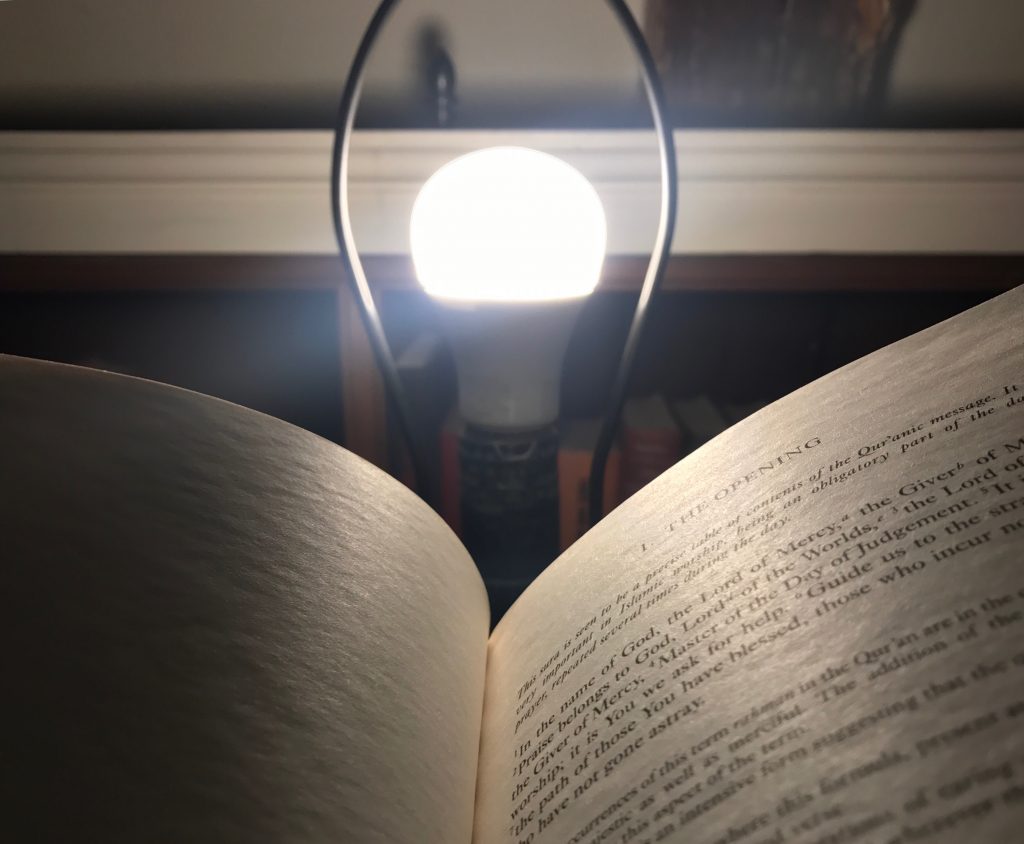Week 2: The Light and the Qur’an

There are multiple layers of meaning to this digital photography piece, but the main idea that inspired this piece was the verse regarding light in the Qur’an: “God is the Light of the heavens and the earth; the likeness of His Light is as a niche wherein is a lamp – the lamp in a glass, the glass as if it were a glittering star –kindled from a Blessed Tree, an olive tree that is neither of the East nor of the West, whose oil well-nigh would shine even if no fire touched it; Light upon Light; God guides to His Light whom He wills. And God strikes similitudes for man, and God has knowledge of everything” (24:35).
The light in this photo is the focal point illuminating everything in the darkness surrounding it, representing the idea of the ubiquity of God in Islam as discussed in lecture. The light shines upon the other central part of the photo – a written copy of the Qur’an, which is specifically turned to the opening, Surah Al-Fatiha. This is important, as God having knowledge of everything and guiding His Light to whom He wills is represented in the revelation of this sacred scripture to Prophet Muhammad, thus connecting the idea of light and the Qur’an as it was illuminated piece by piece to the Prophet during his lifetime.
Another layer that this photo uncovers is the idea of access to the scripture and how that is illuminating – as we’ve discussed, the Qur’an was initially an oral/aural transmission in Arabic, which was how it was initially passed from person to person. Although it continues to be recited, the Qur’an’s transition to written text both created stratifications of access to the sacred text based on one’s literacy, but also increased accessibility of God’s word to people of various cultures across the world, thus introducing more people to Islam (guiding individuals to His Light through reading the text).